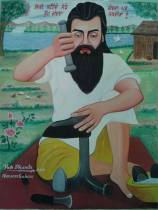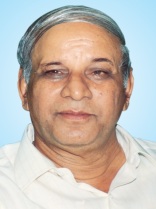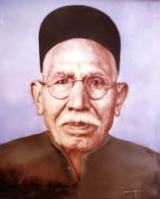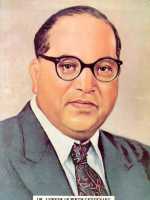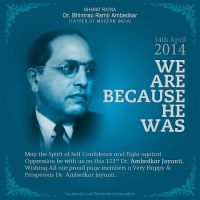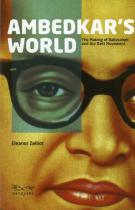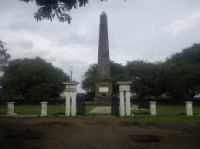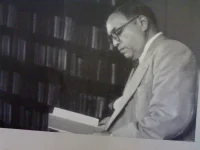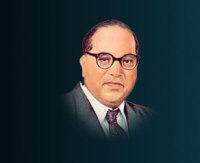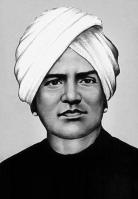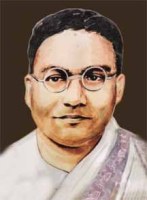Today in Dalit History, we defiantly tell the genocide of Dalits at Marichjhapi in West Bengal. The events involved The Namashudras, Who at that time were a politically powerful Dalit community. It was Because of the Namashudras, under the leadership of Jogendranath Mandal, that ensured the election of Dr.Ambedkar from the Bengal province to the Constituent Assembly. Their firm allyship with the Muslims formed a vote-bloc that deeply threatened the Hindu upper-caste opposition in Bengal.
After partition their Power was threatened for their Ancestral home was in East Bengal and in the newly formed Pakistan many were pressured to Leave. In the face of increasing religious violence Many sold everything they had to escape into West Bengal. However Once in India, the State of West Bengal controlled by Upper caste Communists shuttled the Namashudras into deplorable state work camps.The Namashudras protested, organized and 30,000 of these refugees reached a compromise resettlement area in Marichjhapi in the Sundarbans, a marshy mangrove forest. Over the course of a couple of months they finally restablished a viable beginning to a thriving community.
This was when the real violence began. The Communist and Upper caste State forces of Bengal, under the guise of protecting the local tiger population, sent in forces who began encircling the island, tear-gassing villages, burning down huts, sinking boats, and destroying fisheries, wells and farms. Scholars Estimate Thousands were Murdered, Tortured, and RapeD and yet there are no records because of the complete blackout of Media Coverage. Survivors However, report the indiscriminate dumping of Masses of dead bodies in tiger territories to be eaten and into the rivers until the smells were unbearable and the entire ecosystem was destroyed.
The press, upper-caste Bengali academics, and the communist governments of Bengal continue to shroud the massacres at Marichjhapi in darkness. The Government Officials involved have never been reported to the international courts. police and state perpetrators have been retained and promoted. But the survivors Will not be silenced. They assert the killings amount to nothing less than genocide of the Namashudra community. Today we remember their sacrifice and stand with the NamaShudra community in their demands for justice.
आज दलित इतिहास माह के दिन हम डट के कहानी कहते हैं पश्चिम बंगाल के मरीछझापी जिले में हुए दलितों के नरसंहार की। घटनाकर्म में वह नमशूद्र समाज जुड़ा हुआ है जो उस समय एक शक्तिशाली दलित समाज था. इस समाज ने ही जोगेंद्रनाथ मंडल के नेतृत्व में डॉ आंबेडकर को बंगाल राज्य से चुनाव जिताया.
बटवारे के बाद उनकी ताक़त खतरे में पद गयी क्योंकि उनका मूल पूर्व बंगाल में जो अब पाकिस्तान का हिस्सा बन चूका था और उन पर देश छोड़ने के लिए दबाव डाल रहा था. धार्मिक हिंसा के चलते बहुत सारो ने अपना सब कुछ बेचकर पश्चिम बंगाल की ओर अपने कदम बढाए। लेकिन भारत में पहुँचने के बाद उच्छ जाती के वामपंथियों ने इन् लोगो को बेहद दर्दनाक कैंपो में काम करने के लिए जमा दिया. दो-तीन महीनों में इस समाज ने फिर से अपना जीवन स्थायी कर लिया.
यही समय था जब असली हिंसा उभर कर आई. शेर बचाने के बहाने, बंगाल के उच्छ जातीय वामपंथी शक्तियों ने इस समाज का घेराव सिपाहियों से किया. तथा उन्होंने गाँवों में अश्रु-गैस फेंका, बस्तियों को जलाया, नाव डुबो दिए, मच्छी व्यापार को नष्ट किया। वविद्वानों का कहना है की हज़ारों की मृत्यु , बहुत लोगो का शारीरिक उत्पीड़न और बलात्कार हुआ. फिर भी इस घटना का कहीं भी कोई नाम-ओ-निशाँ नहीं तथा मीडिया में इस विषय को पूरी तरह दबा दिया गया है. जो लोग बच गए कहते हैं की बहुत सारे शव जंगल में शेर के भोजन के लिए छोड़ दिए गए, और कुछ शव नदी में फेंके गए. इस सब से जो बधबू उमड़ उठा वह बर्दाश्त से बाहर था और पूरे वातावरण को नष्ट कर चूका था.
पत्रकार, उच्छ जाती के बंगाली विद्वान, और बंगाल के वामपंथी सरकार आज भी इस घटना पर पर्दा दाल रहे हैं. सरकारी कर्मचारी जो इस नरसंहार में जुड़े हुए थे कभी अंतर्राष्ट्रीय अदालत में पेश नहीं किये गए. पुलिस और सरकारी अपराधी सरकार से जुड़े रहे और प्रोन्नति करते गए. लेकिन जो जीवित रहे वह चुप बैठने वाले नहीं हैं. वह इस बात का दावा करते हैं की इस मात्रा के हत्या को नरसंहार ही समझना चाहिए. आज हम इस नमशूद्र समाज के बलिदान को नमन करते हैं और उनके न्याय के इस लड़ाई में उनके साथ खड़े रहने का संकल्प लेते हैं. जय भीम!














